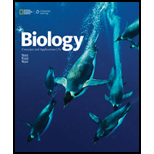
Introduction:
All the substances present in the environment are composed of elements. Biologist gave a sequence of an organization that is followed by every substance. This is known as the “level of organization.”
Answer to Problem 1SQ
Correct answer:
The fundamental building blocks of all matter are atoms. Hence, the correct answer is option a.
Explanation of Solution
Reason for correct answer:
Option a. is given as “Atoms”
The basic level of the organization includes “atoms, molecules, cells, tissues, organs, organ system, organisms, population, community, ecosystem, and biosphere.” The basic, fundamental building blocks that form all matter is an atom. The interaction of atoms results in the formation of molecules. Molecules interact to form cells. The cell is the basic “fundamental unit” of every living organism. The cellular interaction forms tissues and tissues link together to form organs. This formation cycle continues to grow and ultimately forms biosphere. The biosphere is the largest level of organization, and it contains all the substances (both living and non-living) that are present in the environment. Hence, option a. is correct.
Reason for incorrect answer:
Option b. is given as, “Molecules.”
Molecules are one of the smaller units that form substance. However, they are not the fundamental one. Molecules are formed by the interaction of atoms. This indicates that molecules are not the fundamental building blocks of all matter.
Hence, option b. is incorrect.
Option c. is given as, “Cells.”
Cells are the basic “fundamental unit” of life. They are the smallest unit for the formation of organisms but not mater. Cells are formed by molecules, and molecules are composed of atoms. This indicates that cells are not the fundamental building blocks of all matter. Hence, option c. is incorrect.
Option d. is given as “Organisms.”
Organisms are larger units. They contain cells, tissues, organ, and organ system. The basic unit that forms an organism is a cell. However, atoms are the building blocks of the cell. This indicates that organisms are not the fundamental building blocks of all matter. Hence, option d. is incorrect.
Hence, the options b, c, and d are incorrect.
Atoms are the fundamental building blocks of all matters. Thus, the correct option is a.
Want to see more full solutions like this?
Chapter 1 Solutions
Biology: Concepts and Applications (MindTap Course List)
- The smallest unit of biological structure that meets the functional requirements of “living” is the ______. a. organ b. organelle c. cell d. macromoleculearrow_forwardThe ____________ is the basic unit of life. a. organism b. cell c. tissue d. organarrow_forwardWhich structure is not a component of all cells?a. cell wall c. genetic materialb. cell membrane d. ribosomesarrow_forward
- A___ is two or more atoms joined together A. Cell B. Tissue C. Molecule D. Particlearrow_forward______move around for at least part of their life. a. Living organisms c. Species b. Animals d. Eukaryotesarrow_forwardCells are? A. None of the above B. Atoms that are bound together C. Tiny units of matter that form molecules D. The smallest units of lifearrow_forward
- All of the chemical reactions that occur in a cell are calleda. homeostasis. b. metabolism.c. heterostasis.d. cytoplasm.arrow_forwardAt each level in the hierarchy of living things, properties occur that were not present at the simpler levels. These properties are referred to asa. novelistic properties. c. incremental properties.b. complex properties. d. emergent properties.arrow_forwardWhich statement about living organisms is not correct? A. Living organisms create energy. B. Living organisms maintain homeostasis. C. Living organisms reproduce. D. Living organisms have adaptations. E. Living organisms grow and develop.arrow_forward
- Which component is not a structure of a cell? a. outer membrane b. cell membrane c. genetic material d. cytoplasmarrow_forwardThe function of the cell membrane is similar to the function of what human organ system? A. Digestive B.integumentary C.muscular D. Skeletal arrow_forwardMolecules are the smallest functional units of life. A. True B. Falsearrow_forward

 Concepts of BiologyBiologyISBN:9781938168116Author:Samantha Fowler, Rebecca Roush, James WisePublisher:OpenStax College
Concepts of BiologyBiologyISBN:9781938168116Author:Samantha Fowler, Rebecca Roush, James WisePublisher:OpenStax College




